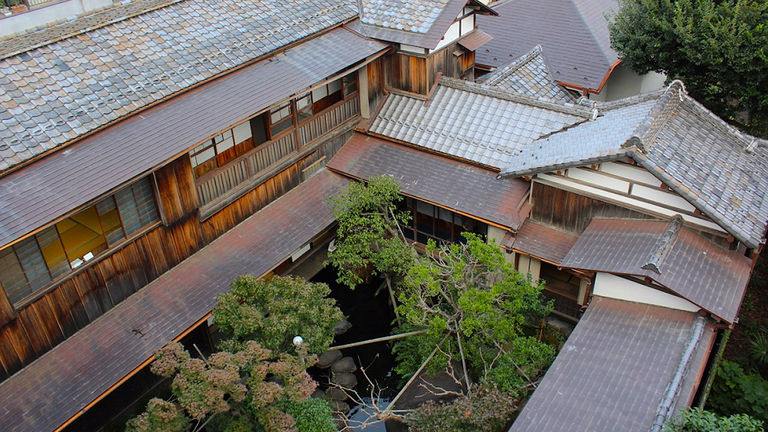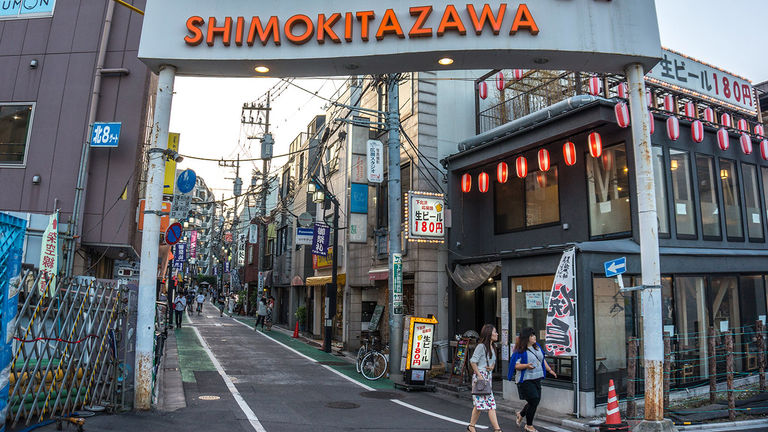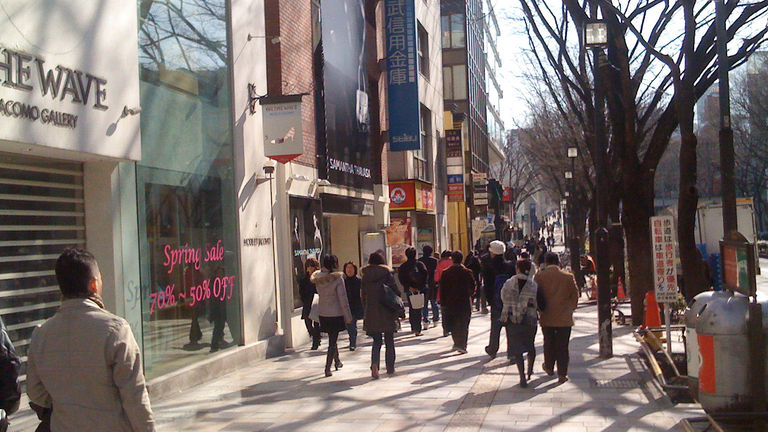With or without the 2020 Tokyo Olympic Games, there is never an off-season in Japan’s capital. Although some feel the crowds and abundance of neon add to Tokyo’s perennial appeal, there are neighborhoods hidden behind the skyscrapers and posh malls that present a “real” Tokyo. Here, the city’s past is preserved while innovations in fashion, food and art are percolating.
With that in mind, here are five places in Tokyo to eat, shop and chill like a local.
For Temples and Tranquility: Yanesen’s Yanaka Ginza
After visiting Ueno Onshi Park and Tokyo National Museum in Taito City, walk 15 minutes through Tokyo University of the Arts’ lush grounds into Yanesen. En route to the Yanaka Ginza shopping street — which survived World War II air raids and remained intact — travelers will pass the old Yanaka Cemetery (containing the grave of Tokugawa Yoshinobu, Japan’s last shogun), Tennoji Temple, Kannon-ji Temple and the Asakura Sculpture Museum, which is inside the former home of sculptor Fumio Asakura.
 Asakura Sculpture Museum in Yanesen
Asakura Sculpture Museum in Yanesen
Credit: 2020 Elyse GlickmanThe milieu of early 20th-century city life flows into Yanaka Ginza and the nearby Ameyokocho Market, where clients will observe long-time residents purchasing produce, meats, baked goods, snacks and roasted tea at modest shops and stalls. Bakery-cafes such as Yanaka Kenshido and snack shops including Ikayaki Yakiya also echo a residential Tokyo from a different era.
For an Emergent Capital of Cool: Shimokitazawa
To prevent Shimokitazawa from becoming the next trendy spot a la Harajuku or Ebisu, artists, shop owners and restaurateurs are shaping it as a welcoming, chain-free destination where what’s new and exciting evolves organically.
The enclave — two stops from Shibuya on the Odakyu subway line — is best known for its secondhand shops (i.e., Flamingo, Mode Off, Little Trip to Heaven) and up-and-coming designer ateliers that feature a bohemian-chic ambiance that has been curated down to its infectious playlists of American ’70s funk and ’60s Brit pop.
Several old-school vinyl record stores add to Shimokitazawa’s soundtrack, while quirky spots like B&B (“Book and Beer”) and B-Side Label deliver genuinely only-in-Tokyo shopping experiences. Pocket-size eateries such as Torisoba Soruto, Shirohige’s Cream Puff Factory and Flipper's are interspersed between shops, allowing for optimal people-watching.
The area, which was established as a residential district after the 1921 Great Kanto Earthquake flattened other Tokyo neighborhoods, became the city’s equivalent to San Francisco’s Haight-Ashbury in the 1970s. This, perhaps, provided a namesake for another of its popular secondhand shops: Haight & Ashbury.
 Shimokitazawa features secondhand shops and vinyl record stores.
Shimokitazawa features secondhand shops and vinyl record stores.
Credit: 2020 Creative Commons user JahnmitJaFor a Purr-fect Shopping Spree: Omotesando and Cat Street
Discerning shoppers looking for an alternative to skyscraper-laden Ginza will enjoy Omotesando, which straddles the Shibuya and Minato districts as well as Harajuku’s teen-oriented Takeshita-dori (aka “Kawaii Street”). While Omotesando Avenue is lined with internationally known designers, travelers will find more sophisticated young residents along pedestrian-friendly Cat Street and its adjoining alleys.
On Cat Street, look for edgy clothing stores, chic indie coffee shops and street art. Suggest clients check out The Nezu Museum, which houses pre-WWII tea ceremony essentials such as ceramics, lacquer items, paper screens, textiles and sculptures collected by businessman and politician Nezu Kaichiro.
Cat Street is also considered a “newer” part of town, as it was built into a streambed that was diverted underground during the preparation for the 1964 Tokyo Olympics.
 Omotesando is a shopper’s paradise.
Omotesando is a shopper’s paradise.
Credit: 2020 Creative Commons user kim-raFor a Foodie’s Paradise: Kagurazaka
Although Kagurazaka is tucked into Shinjuku, Kagurazaka-dori (“dori” is the Japanese word for “street”) and its side streets have much in common with old Kyoto. Through the end of the Edo Period, it was an entertainment district with geisha houses and restaurants.
Today, it retains that character, though it’s now also a wonderland for foodies and sake enthusiasts. In addition to posh bistros, affordable izakayas (informal bars) and quality street food, visitors will find specialty retailers laser-focused on Japanese and French delicacies.
Noteworthy locales include Kinozen, dedicated to matcha bavarois (green tea pudding); Baikatei, which offers high-end traditional sweets; and Kogetsu, known for its Senju-Senbei ice cream sandwich made with waffle biscuits. This neighborhood is also a must-see stop for architecture lovers, as it’s home to two iconic buildings by New National Stadium designer Kengo Kuma: Akagi Shrine, and warehouse-turned-minimalist chic shopping center La Kagu.
For European Vibes: Jiyugaoka
The surprisingly quiet Jiyugaoka, located about 20 minutes by train from Shibuya, has a Marie Claire Promenade outfitted with Parisian-style benches, as well as La Vita, with a Venetian bridge and gondola. Instead of chain stores, there are many sweet shops along with retailers stocking French and Italian imports or Japanese-made clothing and home items with a European sensibility.
Although the neighborhood was completely rebuilt after being destroyed in WWII, there are several compelling remnants of pre-war Japan that are restored and open to the public. Kosoan, an early 20th-century residence, houses a gallery, a garden and a cafe serving green tea and traditional Japanese desserts. The grounds of the 800-year-old Kumano Shrine, located behind a thicket of trees near Kosoan, is known for its several hidden statues.
The Details
Go Tokyo
www.gotokyo.org
Japanese National Tourist Organization
www.jnto.go.jp